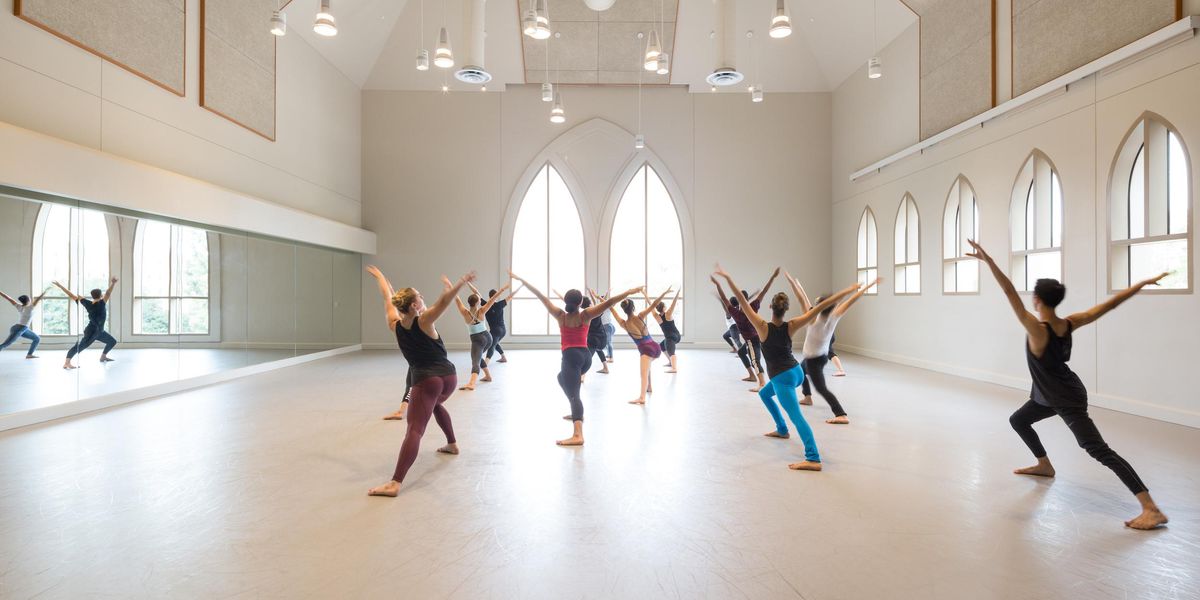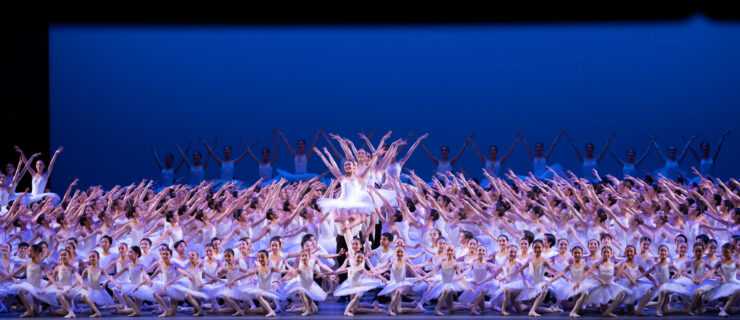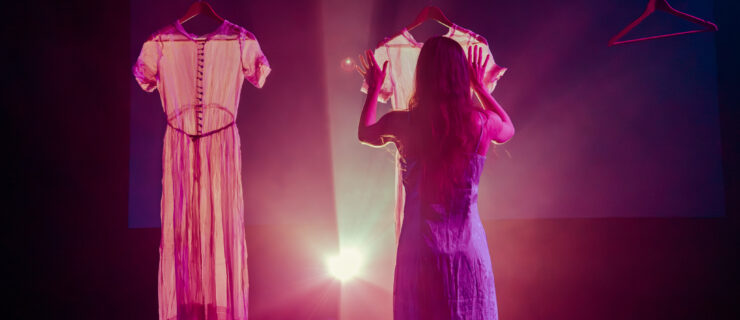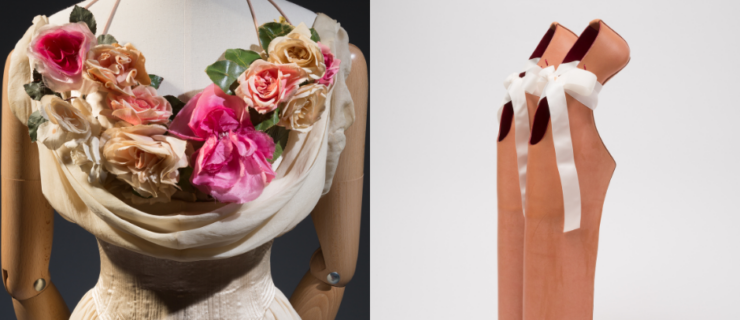Transitions
Retirements
Leonides Arpon
is a compact dancer with a huge heart. Even standing still, he radiates electricity through his taut limbs and intense expression. And when he starts moving, he pushes the limits of maximum acceleration, extension, and projection. You have no choice but to watch his incisive renditions of Karole Armitage’s explosive, ballet-infused style. After eight years with Armitage Gone! Dance, he is retiring from the company.
Arpon’s favorite Armitage work is Time is the echo of an axe within a wood, made when the choreographer returned to New York in 2004 after years in Europe. “I enjoy the challenge of executing the contemporary ballet aesthetic while having the freedom to interpret Karole’s concept, culture, and the philosophy that inspires her,” he says.
Of Filipino heritage, Arpon, 30, began dancing at 6 at the Bat-Dor Dance School in Israel. His plans include developing outreach programs for children in those countries, helping them to realize their potential. He will continue to study Argentine tango and explore commercial opportunities as a dancer/choreographer. After this chapter in his career, he takes away this thought: “I most value the wonderful artists I have met and the places I have seen, which have opened up my heart even more. I have no doubt that art can truly heal the world.” —Susan Yung
Amidst countless flowers and a thunderous, 15-minute ovation, Pennsylvania Ballet’s Martha Chamberlain retired in April. The lively principal was known for her expressive dancing in many Balanchine ballets and for her portrayal of heroines both comedic and dramatic.
A homegrown talent, Chamberlain began studying ballet at the Fellowship House in nearby Media, PA, and graduated from the School of Pennsylvania Ballet (now the independent Rock School). She joined PAB as an apprentice in 1989, working her way to principal in 2000.
Chamberlain, 39, underwent extensive knee surgery six years ago, from which, she says, “it took a lot of PT and a lot of will to come back. The past three years, I got the chance to do a lot of great ballets I never thought I would do, like Rodeo and Square Dance.” She explains, “I wanted to stop while dancing was still an enjoyable process. Twenty-one years is a long time.”
Chamberlain felt that Who Cares? would set the right celebratory tone for her final performance. “I didn’t want to retire with something where everybody dies at the end,” she laughs. “Who Cares? is so fun.” About her final bow she says, “It was surreal. The audience’s reaction was overwhelming. I don’t like being in the center of attention, but in that moment, I allowed myself to take it all in.”
The humorous Katherina in Cranko’s The Taming of the Shrew, and “Rubies” from Balanchine’s Jewels, numbered among her favorite roles. In addition to her onstage partnership with her husband, company member Jonathan Stiles, she will miss dancing with principal Alexander (Sasha) Iziliaev.
Chamberlain, who has been sewing since the age of 5, has designed costumes for such choreographers as Matthew Neenan, Annabelle Lopez Ochoa, Helen Pickett, and Jorma Elo, whose Pulcinella for PAB premiered earlier this year. She plans to keep designing for the stage and get her own line, MC Dancewear, up and running. She will continue to teach ballet at several schools, including The Dance Center in West Chester, PA, where she studied as a young dancer. —Kina Poon
New Roles
Jose Manuel Carreño
, a leading man who combines heroic strength with modest sensitivity, will bid farewell to ABT on June 30 during the company’s Metropolitan Opera season. The performance of Swan Lake will feature Carreño partnering Julie Kent as Odette and Gillian Murphy as Odile. He has consistently thrilled ABT audiences with his stellar technique, unforced masculinity, extraordinary partnering skills, and meticulous melding of athleticism and artistry. Before joining ABT as a principal dancer in 1995, Carreño danced with the English National Ballet beginning in 1990 and was a member of The Royal Ballet from 1993 to 1995.
“I especially love dancing full-length ballets with history and an acting background,” he says. Among his favorite ballets to perform were Giselle, Don Quixote, and Romeo and Juliet.
He fulfilled one of his greatest wishes when ABT performed in his native Cuba last fall (see “Dance Matters,” Feb.). “It was one of the best times in my life,” he says. “To perform with my company, ABT, was really special. I told the Cuban dancers, ‘No more ABT in videos. Now you are going to see the company live.’ ”
Carreño, a 2004 recipient of the Dance Magazine Award, plans to continue dancing as a guest performer and to keep teaching and coaching. He will also serve as artistic director of the Carreño Dance Festival in Sarasota, FL, and would like to make it an annual event. The festival includes an intensive in August with the goal of training pre-professional students.
But Carreño says he will miss the company he has long called home. “ABT has been a very special company for me. You do so many things—classical and contemporary pieces. But I have had propositions before from Broadway that I have never been able to do. This will be a new step in my life.” —Joseph Carman
Pacific Northwest Ballet’s Ariana Lallone will forever be remembered for her stunning line and gracious manner, immortalized on the cover of Dance Magazine in 1998 when Howard Schatz shot her in a glorious gown of black tulle-like fabric. The statuesque ballerina, now 43, joined PNB as an apprentice in 1987. Seven years later, she became a principal.
For her final PNB appearance at the Encore gala in Seattle last month, she performed the lead in Val Caniparoli’s Lambarena. Having danced in around 100 ballets, her roles in William Forsythe’s In the middle, somewhat elevated, Kent Stowell’s Carmen, and Ulysses Dove’s Red Angels well illustrate her commanding presence.
“Ariana created a truly unique place for herself with her dancing but also her tireless offstage advocacy,” says artistic director Peter Boal. “At home in both the lyrical romanticism of Balanchine’s ‘Emeralds’ and in the grounded pathos of Nacho Duato’s Jardí Tancat, Ariana’s range as an artist has been tremendous.”
Others in the company admire her for challenging the classical ballet “type.” Lallone is 5’11”. “When I was younger, I remember thinking that it would be impossible for a tall ballerina to exist in the ballet world—until I read about Ariana Lallone,” says PNB soloist Lindsi Dec. “Her length, power, and presence onstage and in the studio is going to be greatly missed. Many of us grew up with her on a pedestal.”
Lallone is not moving very far. Beginning in September, she’ll be a regular at Teatro ZinZanni, just across the street from PNB. The improvisational and theatrical performances will be well suited to her striking presence, witty humor, and heartfelt dancing. —Gigi Berardi
In Memoriam
Longtime dancer, production assistant, and manager of New York City Ballet Edward Bigelow died last April. From the 1950s through 1987, he was the go-to guy for just about everything backstage and on tour. He started studying at the School of American Ballet in 1941, joined Ballet Society in 1946, and was still with the group when it was renamed New York City Ballet in 1948. While still performing, he became assistant to Balanchine in 1949.
Writer and former NYCB star Allegra Kent remembers him dancing character roles like the towering figure in Robbins’ Age of Anxiety and Mother Ginger in Balanchine’s The Nutcracker. But more than his onstage roles, she remembers how kind he was to everyone.
“On my first tour to Europe, when I was 16,” she reminisces, “he was looking out for me. He was so worried about me that he gave me the upper berth on the plane usually reserved for ballerinas.” She also remembers that he gave out pointe shoes, made sure the dancers got to costume fittings, and carried out every wish of Balanchine and Kirstein. “Whatever was necessary,” says Kent.
As mentioned in the May issue (“Sinful Memories”), Bigelow’s backstage duties included catching Kent as she dove through a window frame in The Seven Deadly Sins. Says Kent, “He was totally reliable, totally cool.”
Jacques d’Amboise remembers in his autobiography, I Was a Dancer, that once on tour in Kiev, Bigelow stepped in as Rothbart at the last minute when Shaun O’Brien had disappeared (he had been taken to jail!). It was a role Bigelow had originated more than 10 years before.
In 2004, he curated the exhibit “Balanchine 100: Centennial Exhibition,” which graced Lincoln Center that year. —Wendy Perron
From top: Leonides Arpon in Armitage’s
Gaga Gaku. Photo by Julieta Cervantes, Courtesy AGD; Martha Chamberlain with Zachary Hench in Balanchine’s Who Cares? Photo by Alexander Iziliaev © Balanchine Trust, Courtesy PAB; Jose Manuel Carreño in Diana and Acteon. Photo by Rosalie O’Connor, Courtesy ABT; Ariana Lallone in Dove’s Red Angels. Photo by Angela Sterling, Courtesy PNB.




